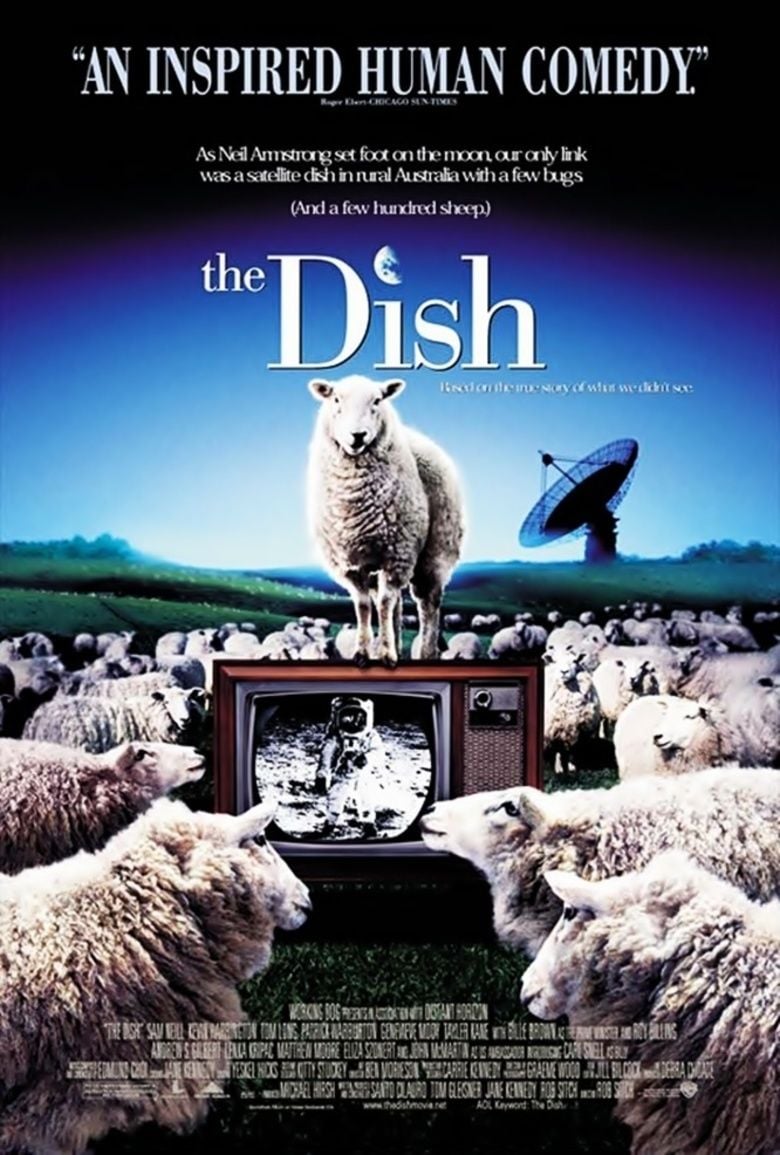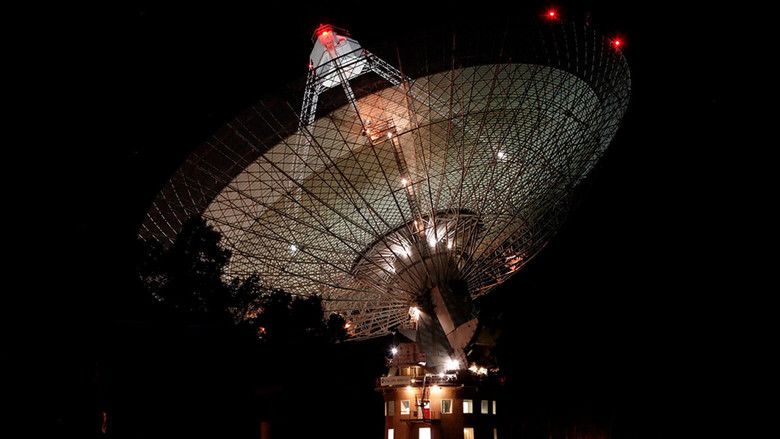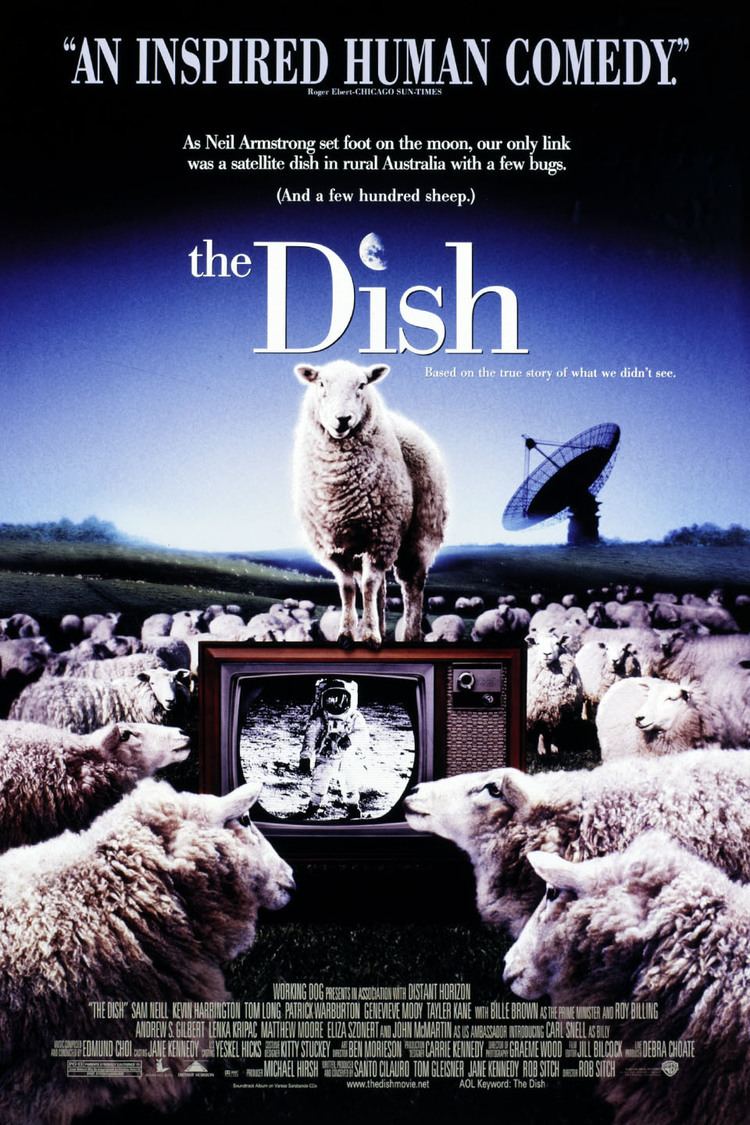The Dish
8.2 /10 1 Votes
96% Rotten Tomatoes 74% Metacritic Genre Comedy, Drama Initial DVD release August 28, 2001 Language English, Japanese | 7.3/10 IMDb 3.5/4 Roger Ebert Music director Edmund Choi Duration Country Australia | |||||||||||||||||||||||||||||||||
 | ||||||||||||||||||||||||||||||||||
Release date Toronto Film Festival15 September 2000Australia19 October 2000 Cast (Cliff Buxton - Dish Master), (Al Burnett - From NASA), (Ross 'Mitch' Mitchell - Maneuvers), (Glenn Latham - Electronics), (Janine Kellerman - The Girl), (Rudi Kellerman - Safeguard) Similar movies The Martian , Interstellar , Mad Max: Fury Road , The Rescuers Down Under , Jupiter Ascending , Knock Knock Tagline Man's first step on the moon nearly stumbled on earth | ||||||||||||||||||||||||||||||||||
The dish trailer
The Dish is a 2000 Australian film that tells a somewhat fictionalised story of the Parkes Observatory's role in relaying live television of man's first steps on the Moon during the Apollo 11 mission in 1969. It was the top grossing film in Australia in 2000.
Contents

Plot

The radio telescope at Parkes (Parkes Observatory), New South Wales, Australia, was used by NASA throughout the Apollo program to receive signals in the Southern Hemisphere, along with the NASA Honeysuckle Creek Tracking Station near Canberra.
In the days before the July 1969 space mission that marked mankind's first steps on the Moon, NASA was working with a group of Australian technicians who had agreed to engineer a space-to-earth interface to carry the video and telemetry signals from the Lunar Lander on the Moon and relay them to the rest of the global audience, estimated then at some 600 million people. The actual dish antenna used had to be large as the signals expected from the spacecraft were very weak and easily lost. NASA had to use the Parkes radio telescope situated in the middle of an Australian sheep farm. There were some background concerns at NASA about using the Parkes antenna, mainly technical, as the signals had to go via point to point microwave links to get re-transmitted globally.
Based on a true story, "The Dish" takes a sometimes comical look at the differing cultural attitudes between Australia and the U.S. while revisiting one of the greatest events in history. It depicts the activities in a control room of a radio telescope doing a job it was not originally expected to do, but in the end did very well. The directors of the film portray, quite accurately, what is in essence, a complex technical task, such as re-pointing the dish when it loses the signal's "lock" and deciding to use it when the wind whips up threatening to damage the structure. The film dramatises the team-work of a few technicians, who sometimes nearly lose their cool with each other, painted against a backdrop of proud Australian townfolk, with visiting dignitaries hoping nothing will go wrong at the crucial moment.
Cast
Production
Although based on true events, the film uses fictional characters and alters historical details for dramatic effect. NASA's Honeysuckle Creek and Goldstone stations both had the signal first, but Parkes' signal was used soon after the beginning of the moonwalk. No power failure occurred, there was no friction with the NASA representatives (of whom there were several, not just one), and Prime Minister John Gorton visited Honeysuckle Creek, not Parkes. They did, however, operate in very high winds gusting to 110 km/h (68 mph) at 60 degrees inclination, risking damage to the dish and even injury to themselves to keep the antenna pointed at the Moon during the moonwalk.
Much of the film was shot on location; the "cricket match" and "hayride" scenes were shot on the real dish and researchers often postponed experiments to position the dish for photography. The set reconstructing the 1969 control room was extremely accurate, down to some details as small as ashtrays. Some of the "props" were in fact original NASA equipment used during the Apollo 11 landing, left behind in Australia as they were too heavy (i.e. too expensive) to ship back to the U.S. Staff from that era expressed amazement at seeing the set; they said it was like stepping through a time warp.
The Dish was written by Santo Cilauro, Tom Gleisner, Jane Kennedy and Rob Sitch and directed by Sitch.
Apart from the radio telescope scenes, the majority of the movie was actually filmed in the small town of Forbes 33 km (21 mi) south of Parkes because of its old historic buildings, and also in Old Parliament House in Canberra, and Crawford Studios in Melbourne.
Box office
The Dish grossed $17,999,473 at the box office in Australia.
Reception
On the review aggregator website Rotten Tomatoes the film holds a 96% fresh rating.
References
The Dish WikipediaThe Dish IMDbThe Dish Rotten TomatoesThe Dish Roger EbertThe Dish MetacriticThe Dish themoviedb.org
